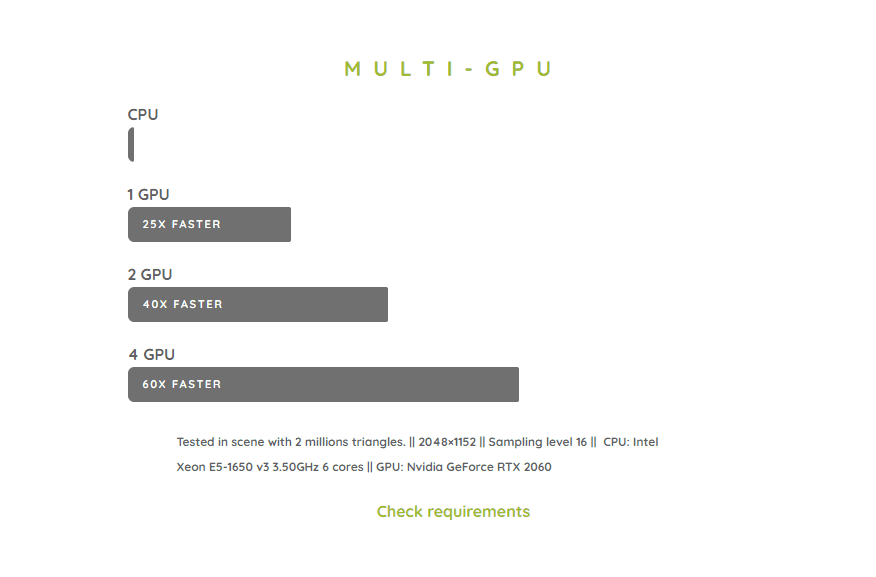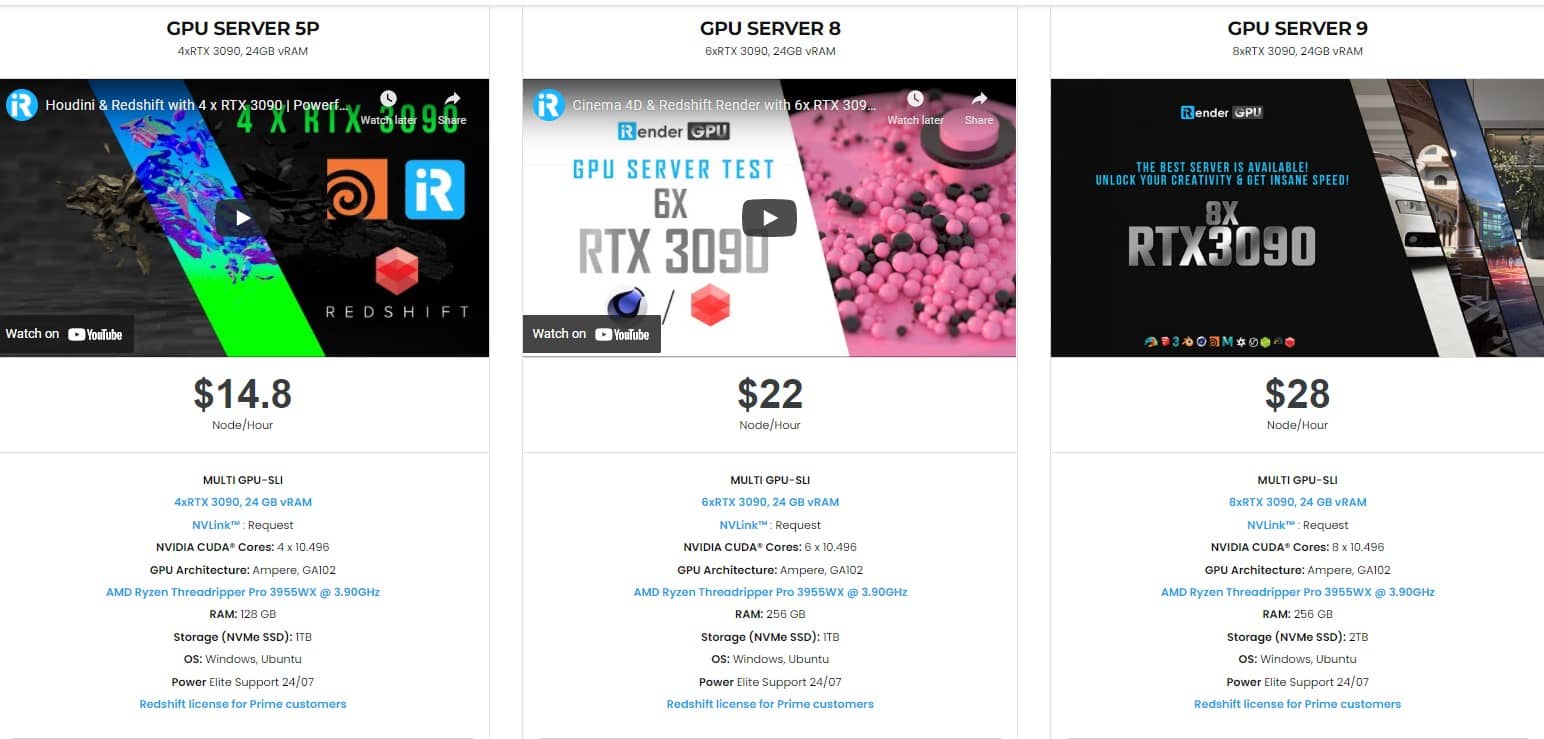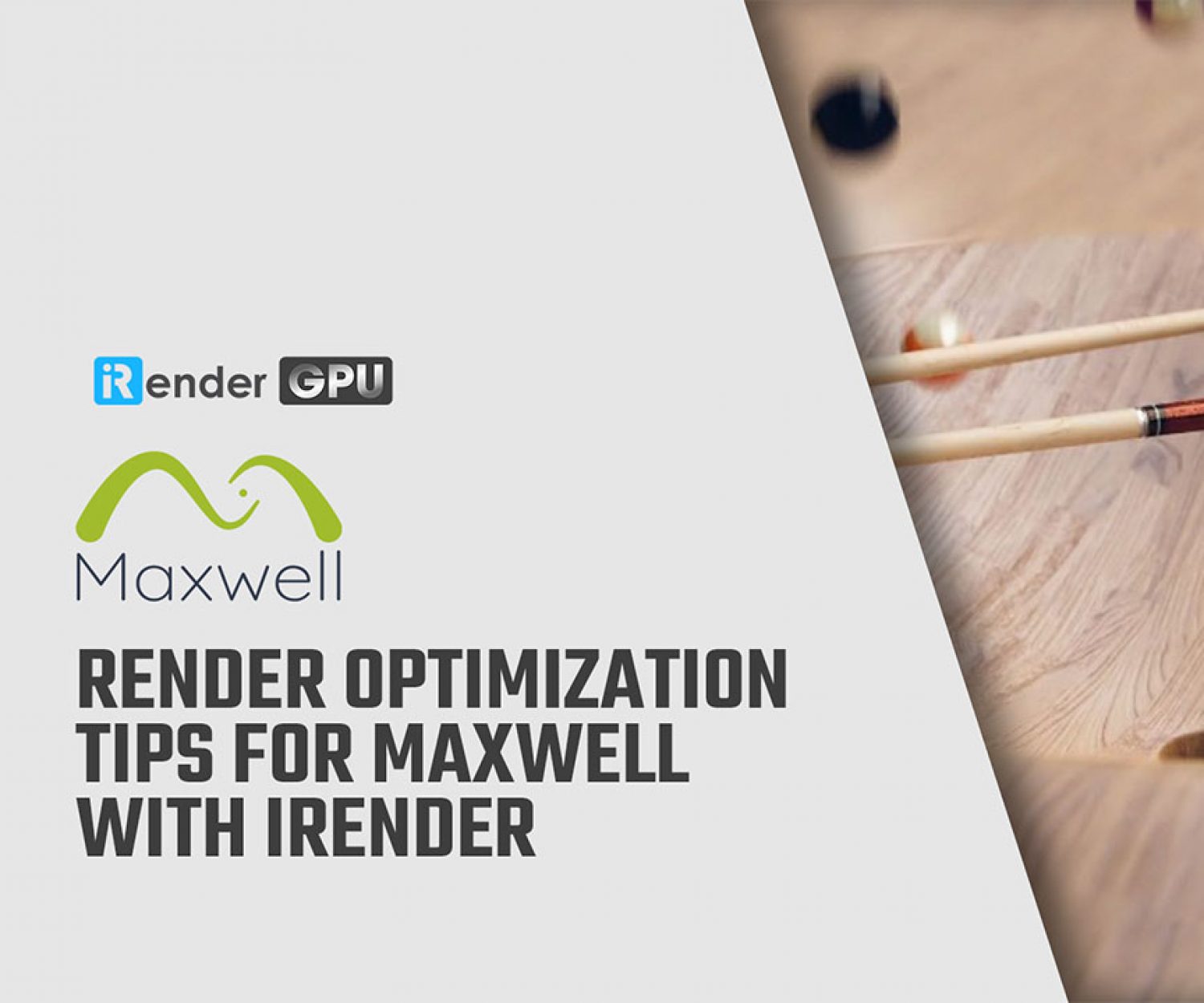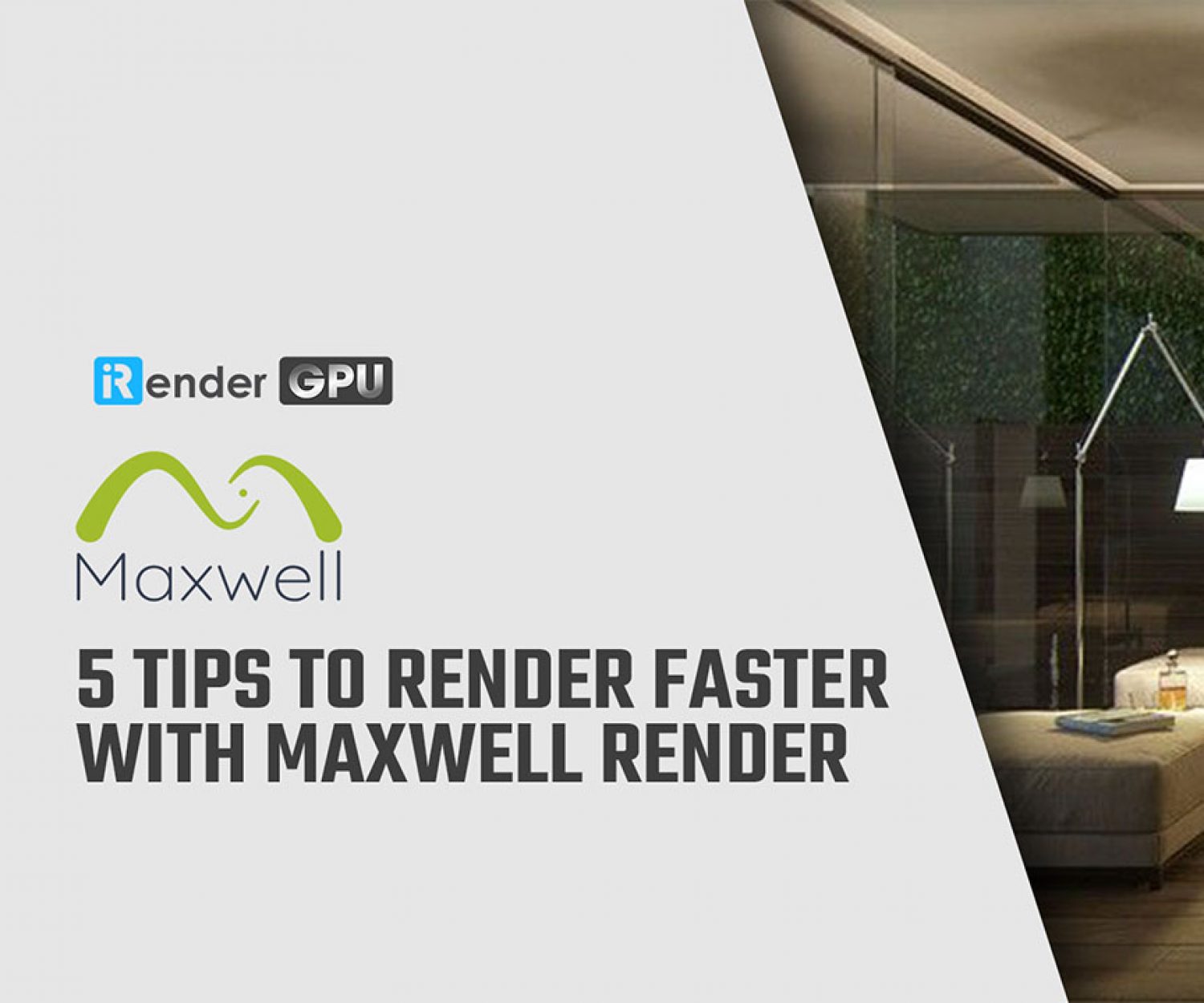Boost Maxwell Render Performance with iRender Multi-GPU Server
Maxwell Render™ is a rendering engine based on the mathematical equations governing light transport, meaning that all elements, such as emitters, materials and cameras, are derived from physically accurate models. Maxwell Render is unbiased, so no tricks are used to calculate the lighting solution in every pixel of a scene; the result will always be a correct solution, as it would be in the real world. Maxwell Render can fully capture all light interactions between all elements in a scene, and all lighting calculations are performed using spectral information and high dynamic range data.
Due to its very nature, Maxwell Render enables users to create accurate and extremely realistic images. Maxwell Render is a recognized standard in architectural visualization, product design, jewelry, film production, scientific research and other high-end rendering markets, and the leader in render quality.
Maxwell Render is a rendering engine that accepts models and scenes created in 3D or CAD applications. Several of these applications are directly supported through a Maxwell Render plug-in; others can be used in conjunction with Maxwell Render by importing the geometry into Maxwell Studio, a component of the software.
Maxwell system requirements
The minimum system requirements for Maxwell Render are as follows:
Windows
- Windows Server 2008 R2 SP1, Windows 7, 8, 8.1, Windows Server 2012, Windows 10 or Windows Server 2016.
- 2 GHz Intel® Core2 processor, AMD Athlon 64 or better
- 1GB RAM minimum. 16 GB of RAM memory is highly recommended
- 1.7 GB available hard disk space for installation
- Accelerated OpenGL drivers
- 3 button mouse recommended
MacOS
- MacOS 10.11 (El Capitan), 10.12 (Sierra), 10.13 (High Sierra), 10.14 (Mojave), 10.15 (Catalina) and 11 (Big Sur).
- Maxwell can only work on M1 processors through Rosetta.
- 1 GB RAM minimum. 16 GB of RAM memory is highly recommended
- 1.7 GB available hard disk space for installation
- 3 button mouse recommended
Linux 64
- x86_64 distribution with a 2.6 Kernel and glibc 2.5
- Tested on Debian GNU/Linux 7 (wheezy), Fedora Core release 6 (Zod), CentOS release 6.5 (Final), Ubuntu precise (12.04.2 LTS)
- 2 GHz Intel® Core®2, AMD Athlon 64 or better
- 1 GB RAM minimum. 16 GB of RAM memory is highly recommended
- 1.7 GB available hard disk space for installation
- 3 button mouse recommended
GPU engine
- Graphics cards that support CUDA platform (Nvidia), running on Windows. No AMD or Intel will work, sorry. This means the GPU engine is not supported for Mac, as they don’t use Nvidia cards.
- The drivers should be up to date.
- Maxwell, Pascal, Volta, Turing and Ampere architectures are supported (for reference you can check this table); it could work on Kepler architecture but it could be unstable and the experience won’t be good.
Denoiser
- Denoiser is capable of running on CPU or GPU, with Nvidia, AMD and Intel graphics cards; it works with CUDA (Nvidia) and also can work using OpenCL either in GPU (Nvidia, AMD or Intel) or CPU.
- When using GPU, we recommend having a graphics card with at least 2.5GB. This number is actually dependent on frame size, 2.5GB is for 2k pixels square imagery.
- When using Nvidia CUDA, the drivers should support at least CUDA 7.0
- When using AMD, the Catalyst driver should be up to date.
- The Denoiser will first try to use CUDA, if it doesn’t find a compatible card, it will fallback to OpenCL GPU (usually with AMD and Intel cards). If the image doesn’t fit in the graphics card memory, you can then use OpenCL with CPU (which will use RAM memory).
Which card should we use to have the best performance with Maxwell
If you have ever heard that Maxwell is slow…well, it was. The story has changed in Maxwell 5. A fully rewritten multi-GPU core now delivers final results in minutes and accurate previews in seconds, keeping physical accuracy intact. With multiple GPUs working in parallel you’ll get an unprecedented Maxwell experience.
Here is some GPU engine hardware requirements:
-
Graphics cards have to be based on CUDA. The GPU engine is built upon CUDA computing platform, which is developed by Nvidia, so only Nvidia graphics cards will work. AMD or Intel cards won’t work.
-
Maxwell, Pascal, Volta and Turing micro-architectures are supported (compute capability 5.0 and up). Kepler architecture is not supported but cards based on it could work.
-
It’s very important that graphics card drivers are up to date.
As recommended on Maxwell official website, we need to use only Nvidia, no AMD or Intel. As usual, the bigger the numbers, the better, but which numbers do really affect the render?
-
The memory of the graphics is crucial as the whole scene has to fit in it to be able to render, so the higher the better. The amount of memory is not relevant for the speed of the render though; this will affect the size of the image you can render, the amount of geometry you can load and the number and size of the textures that can be loaded to render.
-
The higher the number of CUDA cores and their speed, the better. This will determine the rendering speed for that particular graphics card.
-
The size of the memory interface and its bandwidth will also affect speed as it affects how fast the information travels between the memory and the cores. The higher the better.
Boost Maxwell Render Performance with iRender Multi-GPU Server
With GPU render, we have options from single GPU to multi-GPU server packages. However, in today article, we will just mention our superb Multi-GPU servers with high-end hardware which will bring you the best experience with Maxwell.
These servers are the ultimate online solution for Maxwell rendering allowing up to multiple, powerful GPU multi-card servers. And, you can control the power and performance for the highest level customization and configuration in application resource usage. These servers are the premier solutions to maximize your advantage when you need it most – to win the project, to meet the impossible deadline, or pivot your visual direction with unparalleled speed.
Conclusion
With the mentioned system configuration requirements for the Maxwell, you may consider investing in your own machine or upgrading your existing computer. Or another attractive option is to use the service at iRender to get great advantages. Why we can confirm so:
- As you all know, iRender provides high performance and configurable server system to customers who need to utilize the power of CPU & GPU such as 3D rendering, AI training, VR&AR, simulation, etc. With iRender IaaS and PaaS services, you can access our server through the Remote Desktop Application and do whatever you want and install any software you need on it. It is like you are using your own computer but with a powerful configuration and much higher performance. In particular, you only need to install the software for the first time, the next time you connect to the computer everything is ready for you to use anytime.
- You can use iRender’s machines to render, and use yours for other purposes (such as designing or editing other files). This could save you time a lot, especially when you have a large project and a deadline is coming.
- iRender provides you powerful configuration packages with high performance that can speed up your rendering and improve your job quality. These are configurations of multi-card GPU servers that you should take into consideration if you want to have great performance with Maxwell. And it also depends on the scale of your project to decide which is the most suitable one.
- Another great feature that iRender brings to customers is day/ week/month rental packages with high discounts (10% for daily packages, 20% on weekly and more for 50% monthly packages) which is extremely beneficial for regular long-term users or large projects.
- Real human 24/7 support service, helping you to handle the problem quickly, effectively, saving you both time and money.
Reality means predictable, reliable first-time results. Maxwell Render™ unleashes your creativity without having to struggle with complex computer graphics terminology and countless parameter tweaks. Maxwell Render is specifically made to help architects, designers, and artists to visualize their projects efficiently and accurately with minimum set-up time.
With all the outstanding advantages mentioned above, you must have found yourself the perfect choice for Maxwell Render. We believe the quality of support we provide is as vital as the technology we deliver. We provide unmatched support tailored to your specific needs and goals. What Maxwell users can get from iRender is not only the best quality products but also the high security and the most comfortable render time.
So, do not hesitate anymore to waste your time, please register for an account today to experience our service and reach a new level of cloud rendering. You can contact us via Whatsapp: (+84)912785500, Skype: iRender Support or email [email protected] for the fastest advice and support.
iRender – Happy Rendering!
Related Posts
The latest creative news from Maxwell Cloud Rendering , Cinema 4D Cloud Rendering , 3D VFX Plugins & Cloud Rendering.









